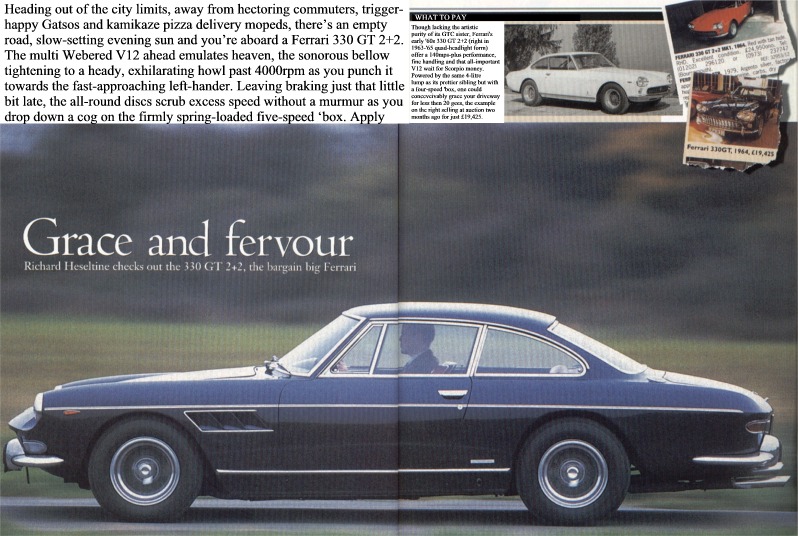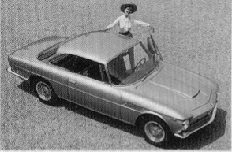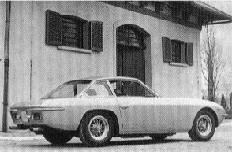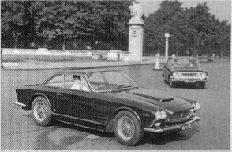 |
330 GT Registry |
 |
 |
|
power, a little corrective lock, and you’re off— heading towards the horizon at an increasingly implausible velocity. Life just doesn’t get any better than this. But, of course, this isn’t real life and, short of taking up armed blagging or winning the lottery, it is never likely to be. But don’t be so sure. The example in the photographs could be yours for a few tenners shy of £25,000— hardly a drop in the ocean, but a tantalising proposition when you consider an entry-level TVR Chimaera costs almost seven grand more. Consider, too, that 10 years ago, at the height of the madness, the price tag would have been more than 10 times as much. To abuse a cliché, there’s never been a better time to buy a classic Gran Turismo Ferrari. Eschew the 275GTBs or Daytonas, which have long been out of the reach of mere mortals, but peruse the classifieds, trawl the Internet and pay a visit to a few auctions and you’ll be amazed at the kit that’s out there. So you’ve remortgaged the house and sold a vital organ, what do you get for your money? A helluva lot. The 330-series Ferrari, in any form, has to be the ultimate bargain ‘60s super car. In the eyes of vendor Anthony Posner of Hendon Way Motors, they’re something of a bargain: “The 330 GT 2+2 is such a special car, driving one lifts you into a different realm. First, there’s that incredible engine — the noise the V12 creates is just amazing. And then there’s the styling which is classically beautiful without being pretentious. In profile it looks stunning and the Jaguar XK8’s nose is very reminiscent of the Ferrari’s. For £25,000 you could have a mid ‘80s Porsche 911, which is a great car, but those extra six cylinders and the prancing-horse badge make all the difference.” Launched to replace the popular 250GTE, the 330 GT 2+2 has lurked in the shadows of its more illustrious forebear since its launch in 1963. Perhaps lacking the posturing arrogance of the Maranello firm’s later efforts, there’s a subtle elegance to the car’s Pininfarina-styled silhouette. With that long, phallic nose, sensual mouth and gently bulging flanks, it looks every inch the playboy’s glamorous toy. |

| THE RIVALS |
 ISO
RIVOLTA ISO
RIVOLTAThe first in a long line of Italian-American hybrids produced by fridge magnate Renzo Rivolti, the Iso boasts impressive credentials: Bizzarrini designed its chassis, Giugiaro the handsome bodywork and it has reliable Chevy V8 power. Fast., practical and a competent handler, about 800 were made from 1962-70— now largely forgotten by all but enthusiasts. Expect to pay around £15,000 for a good ‘un, significantly less for a runner. |
 AC
428 AC
428Blending Italian flair with British craftsmanship, the 428 was produced in pitifully small numbers between I 965-’73. It’s essentially a lengthened Cobra with a new body by Frua, apeing the style of the Maserati Mistrale. Power is from a big-block, 428cu in Ford V8 so acceleration is prodigiously fast (0-60 in around 6 secs), but ride quality isn’t too hot. Expect to pay in the mid 20s for a sorted example, convertibles going for 30 per cent more. |
 GORDON-KEEBLE GORDON-KEEBLEA hugely capable GT,the Gordon Keeble’s star shone brightly for about 30 seconds before the project collapsed in ‘66. Just 99 were made during its two-year life. Powered by a 327cu in Chevy V8 mounted in a spaceframe chassis, the glassfibre-bodied GK boasts a de Dion rear axle and discs on all corners. Hugely capable and devilshly attractive (styling courtesy of Giuglaro), 20 grand should get you one of the best. |
 LAMBORGHINI
ISLERO LAMBORGHINI
ISLEROUnloved son of 400GT commands little respect from marque devotees and is generally shunned by the trade. Bodied by Carrozzeria Marazzi on a 400GT frame, power comes from a 325bhpVl2 so it’s capable of 155mph. S edition with an extra 25 horses is faster still. Not as characterful as other ‘60s Lambos but still an exciting car to drive and surprisingly nimble through the twisty bits. Only 200 or so made, survivors going for up to £28,000. |
 MASERATI
SEBRING MASERATI
SEBRINGBased on a shortened 3500GT chassis and clothed with a crisp, Vignale-styled steel body the refined Sebring marked Maserati’s attempt at tapping the lucrative American market. Powered variously by 3.7 and 4-litre straight sixes plus a five-speed ‘box (auto optional), all-round disc brakes and often troublesome fuel injection, around 450 were sold between 1962 and ‘66. Top examples command around £25,000. A superb long-distance tourer. |
Understated luxury defines the cockpit, a trademark Nardi wheel fronting an attractive wooden dash. Ergonomics are so often the Achilles’ heel of Latin supercars but there are no such problems here. All the handsome white-on-black instruments are easy to read, and the chrome gear lever is thoughtfully angled towards you. The seats afford plenty of lower-back support, the near-vertical wheel and closely-coupled pedals prompting an arms outstretched, legs splayed driving stance. Fire up and the classic twin-cam, 4-litre ‘Lampredi’ V12 thoroughbred emits a throaty burble, all four exhausts eagerly spitting and cackling. Ease off the light, sensitive clutch, and there’s an initial hesitation on take-up as the engine clears its throat. From cold the ‘box is balky but once the oil has warmed up it’s a joy — with short, positive throws — while the steering feels slack at manoeuvring pace but progressively sharpens as the suspension’s loaded.
Though
not at its happiest pottering along in traffic, the Ferrari comes alive out on
the open road — its flexibility is astonishing, with oodles of low-down
tractability and top-end brawn. Past 4000rpm, it proffers a delicious,
highly-strung cacophony as the cams whine, chains thrash and three twin-choke
Webers gurgle. Hit six grand and its vocal chords tighten with a spine-tingling
wail. But, when hooliganism loses its appeal, engine noise isn’t too intrusive
at cruising speeds.
The 330 GT 2+2 is no chuckable light weight but disguises its portly 3040lb
remarkably well. On wide sweepers, there’s only a little roll. Attack tighter
bends and mild understeer is never far away but soon shifts to benevolent
neutrality with more throttle. The independent front suspension, by coils and
wishbones, and live-beam rear feel firmly damped but don’t have a detrimental
effect on the car’s ride. Over undulating surfaces, it soaks up the bumps with
aplomb, accompanied by a fair amount of tyre rumble. The Ferrari’s benign
personality and civilised road manners impress greatly. That a 330 GT 2+2 could
be yours for such a relatively small outlay makes it almost a snip. As Anthony
Posner says: “The classic car market has been depressed for quite some time now
and prices of cars like this have been kept artificially low. I’m sure that when
the market picks up, and it will, the 330 GT 2+2 will be one of the cars whose
value skyrockets. I would say now’s the time to buy one if you want a classic
Ferrari.” •
Thanks to Hendon Way Motors, London (0181 2028011)
Copyright 2000, Classic and Sportscar
Published with permission of Classic and Sportscar
